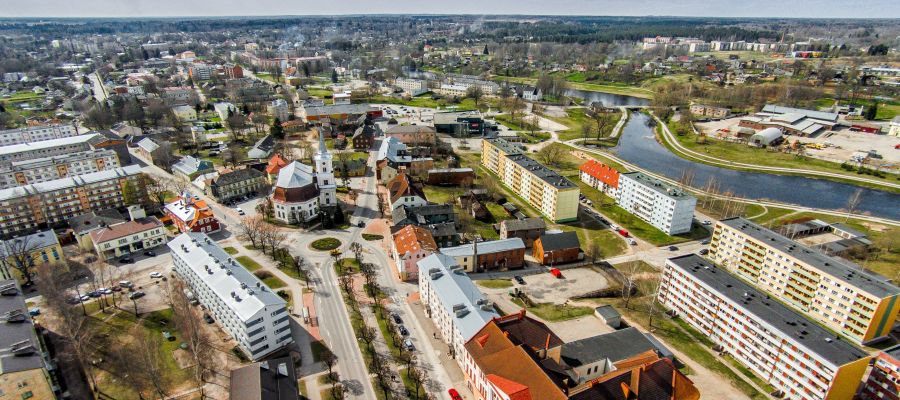
Published 3 Jan, 2019
Sustainable mobility planning in a shrinking city
The twin town Valga – Valka is located at the southern border of Estonia and the northern border of Latvia. Valga is the administrative centre of Valga Municipality and Valka is the administrative centre of Valka Municipality. Until their separation in 1920, Valga and Valka were one town. In 1920, after the proclamation of independence of the Republic of Latvia and the Republic of Estonia, the town was divided between two countries and both countries started to develop own town centre and the border area turned from the former town centre into the outskirts. This has affected the planning of two neighboring cities.
Mobility is an important aspect of city planning, including Valga, which by its character is a shrinking city. Planning of such cities is supported by sustainable mobility.
The study conducted in Valga by Hendrikson & Ko approached mobility from different aspects (modes of moving) and scales (from international to inner city level). Mobility was analysed both from the perspective of current mobility, but also from the point of view of potential mobility.
Cross-border movement analysis takes into account functions on both Valga and Valka side and the distribution of population and thus differentiates all streets crossing the border according to needs and importance. Analysis of the main streets in Valga and Valka revealed areas of different density and different need for street-crossing.
Different functions and distribution of population in the urban space were mapped what provided basis for the following analyzes. A betweenness analysis for Valga was calculated based on the functions and distribution of inhabitants – the method points out the streets and sections of streets with the greatest potential for pedestrian traffic.
The car usage needs were analysed on different scales in Valga and Valka and also revealed different needs for different streets. The results of the analysis should be taken into account, also in cases when the driving speed and space for driving is reduced or when other traffic pacification methods are applied. Both border crossing statistics and mobile positioning data provided insight and were used for assessing the needs of car traffic in Valga and Valka.
The study indicates that the most important aim should be developing Valga into walkable and bicycle-friendly city, concentrating on the streets pointed out by the analyses. The solutions for creating such a city include: wider sidewalks, narrower driving lanes, reduced speed, traffic pacification methods, creating a designated bicycling lanes and parking solutions, and developing a walking-cycling oriented urban space in general as an opposite to car-oriented space. In order to enhance connection between Valga and Valka it is important to connect the urban centres with walkable and bicycle friendly streets, since the short distance between the centres promotes both walking and cycling.
Download the full TENTacle report here.
For more information please contact:
Lea Vutt
Valga Municipality
Head of International Projects
Lea.Vutt@valga.ee
www.valga.ee